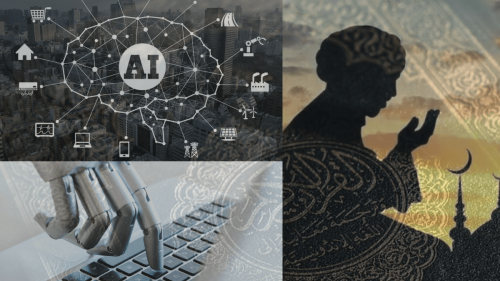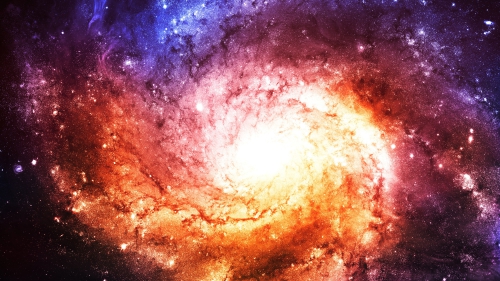a:19:{s:8:"theTitle";s:17:"Satan's Algorithm";s:12:"thePermalink";s:51:"https://www.islamicity.org/103438/satans-algorithm/";s:13:"theAuthorName";s:18:"Mohammad Elshinawy";s:12:"theThumbnail";s:56:"https://img.youtube.com/vi/hyBlrKGCJOI/maxresdefault.jpg";s:6:"isWhat";s:5:"video";s:7:"theIcon";s:33:"";s:8:"theEmbed";s:43:"https://www.youtube.com/watch?v=hyBlrKGCJOI";s:11:"theCategory";s:44:"cannot-retrieve-category-see-cell-part-1.php";s:6:"theTag";s:33:"satan (iblis)|/topics/satan-iblis";s:7:"theDate";s:11:"Nov 19 2024";s:11:"theDate_ORG";s:42:"November 18, 2024 {wpcf-soft-date engaged}";s:9:"theAuthor";s:41:"Mohammad Elshinawy|/by/mohammad-elshinawy";s:5:"theID";i:103438;s:14:"theReadingTime";s:7:"21 min.";s:10:"theExcerpt";s:186:"Satan's Algorithm: A Reflection on the Friday Khutbah by Shaykh Mohammad Elshinawy delivered at the Jesus Son of Mary Mosque in Pennsylvania.
The Danger of Isolation: A Lesson f......";s:12:"theTitle_ORG";s:17:"Satan's Algorithm";s:25:"processRelatedFacetsTitle";s:0:"";s:15:"whereItCameFrom";s:116:"content.php & related posts > post_tag=astronomy OR islam-and-science OR muslim-scientists OR science-and-technology";s:8:"theFacet";s:0:"";}
a:19:{s:8:"theTitle";s:66:"Can Modern Technology Help or Harm a Muslim's Connection to Faith?";s:12:"thePermalink";s:99:"https://www.islamicity.org/102909/can-modern-technology-help-or-harm-a-muslims-connection-to-faith/";s:13:"theAuthorName";s:7:"Chatilm";s:12:"theThumbnail";s:98:"https://media.islamicity.org/wp-content/uploads/2024/10/Impact-of-Modern-Technology-on-Muslims.jpg";s:6:"isWhat";s:7:"article";s:7:"theIcon";s:0:"";s:8:"theEmbed";s:0:"";s:11:"theCategory";s:44:"cannot-retrieve-category-see-cell-part-1.php";s:6:"theTag";s:53:"science and technology|/topics/science-and-technology";s:7:"theDate";s:10:"Oct 5 2024";s:11:"theDate_ORG";s:40:"October 5, 2024 {wpcf-soft-date engaged}";s:9:"theAuthor";s:19:"Chatilm|/by/chatilm";s:5:"theID";i:102909;s:14:"theReadingTime";s:6:"2 min.";s:10:"theExcerpt";s:105:"Modern technology can both help and harm a Muslim's connection to faith, depending on how it is utilized.";s:12:"theTitle_ORG";s:66:"Can Modern Technology Help or Harm a Muslim's Connection to Faith?";s:25:"processRelatedFacetsTitle";s:0:"";s:15:"whereItCameFrom";s:116:"content.php & related posts > post_tag=astronomy OR islam-and-science OR muslim-scientists OR science-and-technology";s:8:"theFacet";s:0:"";}
a:19:{s:8:"theTitle";s:93:"Alaa Badr: AI Technology Trends, GPU & Cloud Integration, and the Muslim Experience in London";s:12:"thePermalink";s:123:"https://www.islamicity.org/102865/alaa-badr-ai-technology-trends-gpu-cloud-integration-and-the-muslim-experience-in-london/";s:13:"theAuthorName";s:13:"Blerta Kosumi";s:12:"theThumbnail";s:91:"https://media.islamicity.org/wp-content/uploads/2024/10/Alaa-Badr-talks-about-AI-Trends.png";s:6:"isWhat";s:7:"article";s:7:"theIcon";s:0:"";s:8:"theEmbed";s:0:"";s:11:"theCategory";s:44:"cannot-retrieve-category-see-cell-part-1.php";s:6:"theTag";s:53:"science and technology|/topics/science-and-technology";s:7:"theDate";s:10:"Oct 2 2024";s:11:"theDate_ORG";s:15:"October 2, 2024";s:9:"theAuthor";s:31:"Blerta Kosumi|/by/blerta-kosumi";s:5:"theID";i:102865;s:14:"theReadingTime";s:6:"7 min.";s:10:"theExcerpt";s:170:"In recent years, we have witnessed numerous technological advancements, many of which have greatly benefited the workplace and will continue to do so in the coming years.";s:12:"theTitle_ORG";s:98:"Alaa Badr: AI Technology Trends, GPU & Cloud Integration, and the Muslim Experience in London";s:25:"processRelatedFacetsTitle";s:0:"";s:15:"whereItCameFrom";s:116:"content.php & related posts > post_tag=astronomy OR islam-and-science OR muslim-scientists OR science-and-technology";s:8:"theFacet";s:0:"";}
a:19:{s:8:"theTitle";s:46:"Is This The Best Argument For God's Existence?";s:12:"thePermalink";s:79:"https://www.islamicity.org/102666/is-this-the-best-argument-for-gods-existence/";s:13:"theAuthorName";s:19:"Let'S Talk Religion";s:12:"theThumbnail";s:56:"https://img.youtube.com/vi/SLsElgfhZtM/maxresdefault.jpg";s:6:"isWhat";s:5:"video";s:7:"theIcon";s:33:"";s:8:"theEmbed";s:43:"https://www.youtube.com/watch?v=SLsElgfhZtM";s:11:"theCategory";s:44:"cannot-retrieve-category-see-cell-part-1.php";s:6:"theTag";s:53:"tawhid (oneness of god)|/topics/tawhid-oneness-of-god";s:7:"theDate";s:11:"Sep 11 2024";s:11:"theDate_ORG";s:43:"September 10, 2024 {wpcf-soft-date engaged}";s:9:"theAuthor";s:46:"Let'S Talk Religion|/source/lets-talk-religion";s:5:"theID";i:102666;s:14:"theReadingTime";s:7:"15 min.";s:10:"theExcerpt";s:163:"Ibn Sina's (Avicenna) "Proof of the Truthful" argues that while everything in the universe is contingent and dependent, a necessary, uncaused existence must exist.";s:12:"theTitle_ORG";s:46:"Is This The Best Argument For God's Existence?";s:25:"processRelatedFacetsTitle";s:0:"";s:15:"whereItCameFrom";s:116:"content.php & related posts > post_tag=astronomy OR islam-and-science OR muslim-scientists OR science-and-technology";s:8:"theFacet";s:0:"";}
a:19:{s:8:"theTitle";s:61:"AI and Islam: Navigating the Path Between Progress and Ethics";s:12:"thePermalink";s:94:"https://www.islamicity.org/92680/ai-and-islam-navigating-the-path-between-progress-and-ethics/";s:13:"theAuthorName";s:19:"Muhammad Mumtaz Ali";s:12:"theThumbnail";s:72:"https://media.islamicity.org/wp-content/uploads/2023/11/AI-and-Islam.png";s:6:"isWhat";s:7:"article";s:7:"theIcon";s:0:"";s:8:"theEmbed";s:0:"";s:11:"theCategory";s:44:"cannot-retrieve-category-see-cell-part-1.php";s:6:"theTag";s:19:"allah|/topics/allah";s:7:"theDate";s:10:"Sep 5 2024";s:11:"theDate_ORG";s:42:"November 14, 2023 {wpcf-soft-date engaged}";s:9:"theAuthor";s:43:"Muhammad Mumtaz Ali|/by/muhammad-mumtaz-ali";s:5:"theID";i:92680;s:14:"theReadingTime";s:6:"7 min.";s:10:"theExcerpt";s:137:"As technology, particularly Artificial Intelligence (AI), continues to advance, it sparks debates about its potential impact on humanity.";s:12:"theTitle_ORG";s:61:"AI and Islam: Navigating the Path Between Progress and Ethics";s:25:"processRelatedFacetsTitle";s:0:"";s:15:"whereItCameFrom";s:116:"content.php & related posts > post_tag=astronomy OR islam-and-science OR muslim-scientists OR science-and-technology";s:8:"theFacet";s:0:"";}
a:19:{s:8:"theTitle";s:57:"Correcting the Scientific Method Legacy of Ibn Al-Haytham";s:12:"thePermalink";s:92:"https://www.islamicity.org/102089/correcting-the-scientific-method-legacy-of-ibn-al-haytham/";s:13:"theAuthorName";s:11:"Spahic Omer";s:12:"theThumbnail";s:117:"https://media.islamicity.org/wp-content/uploads/2024/06/Correcting-the-Scientific-Method-Legacy-of-Ibn-Al-Haytham.png";s:6:"isWhat";s:7:"article";s:7:"theIcon";s:0:"";s:8:"theEmbed";s:0:"";s:11:"theCategory";s:44:"cannot-retrieve-category-see-cell-part-1.php";s:6:"theTag";s:73:"Islamic Culture and Civilization|/topics/islamic-culture-and-civilization";s:7:"theDate";s:11:"Jun 29 2024";s:11:"theDate_ORG";s:38:"June 28, 2024 {wpcf-soft-date engaged}";s:9:"theAuthor";s:27:"Spahic Omer|/by/spahic-omer";s:5:"theID";i:102089;s:14:"theReadingTime";s:7:"23 min.";s:10:"theExcerpt";s:103:"Ibn al-Haytham (d. 1040) was a Muslim polymath specializing in mathematics, astronomy and physics. H...";s:12:"theTitle_ORG";s:57:"Correcting the Scientific Method Legacy of Ibn Al-Haytham";s:25:"processRelatedFacetsTitle";s:0:"";s:15:"whereItCameFrom";s:116:"content.php & related posts > post_tag=astronomy OR islam-and-science OR muslim-scientists OR science-and-technology";s:8:"theFacet";s:0:"";}
a:19:{s:8:"theTitle";s:59:"IslamiCity Joins AI and Faith in Ethical Tech Collaboration";s:12:"thePermalink";s:94:"https://www.islamicity.org/104412/islamicity-joins-ai-and-faith-in-ethical-tech-collaboration/";s:13:"theAuthorName";s:5:"Staff";s:12:"theThumbnail";s:67:"https://media.islamicity.org/wp-content/uploads/2025/03/AInF-IC.png";s:6:"isWhat";s:7:"article";s:7:"theIcon";s:0:"";s:8:"theEmbed";s:0:"";s:11:"theCategory";s:44:"cannot-retrieve-category-see-cell-part-1.php";s:6:"theTag";s:23:"chatilm|/topics/chatilm";s:7:"theDate";s:11:"Mar 28 2025";s:11:"theDate_ORG";s:39:"March 28, 2025 {wpcf-soft-date engaged}";s:9:"theAuthor";s:15:"Staff|/by/staff";s:5:"theID";i:104412;s:14:"theReadingTime";s:6:"2 min.";s:10:"theExcerpt";s:186:"March 28, 2025 – Culver City, CA — IslamiCity is proud to announce its new partnership with AI and Faith, a leading interfaith organization exploring how spiritual traditions c......";s:12:"theTitle_ORG";s:59:"IslamiCity Joins AI and Faith in Ethical Tech Collaboration";s:25:"processRelatedFacetsTitle";s:0:"";s:15:"whereItCameFrom";s:116:"content.php & related posts > post_tag=astronomy OR islam-and-science OR muslim-scientists OR science-and-technology";s:8:"theFacet";s:0:"";}
a:19:{s:8:"theTitle";s:49:"Can Quran Affect Sleep? 5 Facts You Need to Know!";s:12:"thePermalink";s:82:"https://www.islamicity.org/104101/can-quran-affect-sleep-5-facts-you-need-to-know/";s:13:"theAuthorName";s:8:"Amr Ehab";s:12:"theThumbnail";s:66:"https://media.islamicity.org/wp-content/uploads/2025/02/qurann.jpg";s:6:"isWhat";s:7:"article";s:7:"theIcon";s:0:"";s:8:"theEmbed";s:0:"";s:11:"theCategory";s:44:"cannot-retrieve-category-see-cell-part-1.php";s:6:"theTag";s:43:"islam and science|/topics/islam-and-science";s:7:"theDate";s:11:"Feb 19 2025";s:11:"theDate_ORG";s:42:"February 17, 2025 {wpcf-soft-date engaged}";s:9:"theAuthor";s:21:"Amr Ehab|/by/amr-ehab";s:5:"theID";i:104101;s:14:"theReadingTime";s:6:"7 min.";s:10:"theExcerpt";s:97:"Today, countless people, including you or your beloved ones, struggle to get enough quality rest.";s:12:"theTitle_ORG";s:49:"Can Quran Affect Sleep? 5 Facts You Need to Know!";s:25:"processRelatedFacetsTitle";s:0:"";s:15:"whereItCameFrom";s:116:"content.php & related posts > post_tag=astronomy OR islam-and-science OR muslim-scientists OR science-and-technology";s:8:"theFacet";s:0:"";}
a:19:{s:8:"theTitle";s:33:"Qur'anic Insights on the Universe";s:12:"thePermalink";s:67:"https://www.islamicity.org/103971/quranic-insights-on-the-universe/";s:13:"theAuthorName";s:11:"S. M. Yunus";s:12:"theThumbnail";s:79:"https://media.islamicity.org/wp-content/uploads/2025/01/quranic-reflections.jpg";s:6:"isWhat";s:7:"article";s:7:"theIcon";s:0:"";s:8:"theEmbed";s:0:"";s:11:"theCategory";s:44:"cannot-retrieve-category-see-cell-part-1.php";s:6:"theTag";s:37:"quran guidance|/topics/quran-guidance";s:7:"theDate";s:11:"Jan 27 2025";s:11:"theDate_ORG";s:41:"January 27, 2025 {wpcf-soft-date engaged}";s:9:"theAuthor";s:25:"S. M. Yunus|/by/s-m-yunus";s:5:"theID";i:103971;s:14:"theReadingTime";s:7:"23 min.";s:10:"theExcerpt";s:106:"Just from a casual glance at the night sky it appears to us that the universe is magnificent and majestic.";s:12:"theTitle_ORG";s:33:"Qur'anic Insights on the Universe";s:25:"processRelatedFacetsTitle";s:0:"";s:15:"whereItCameFrom";s:116:"content.php & related posts > post_tag=astronomy OR islam-and-science OR muslim-scientists OR science-and-technology";s:8:"theFacet";s:0:"";}
a:19:{s:8:"theTitle";s:59:"Al-Khujandi's Astrolabe: A Masterpiece of Islamic Astronomy";s:12:"thePermalink";s:92:"https://www.islamicity.org/103755/al-khujandis-astrolabe-a-masterpiece-of-islamic-astronomy/";s:13:"theAuthorName";s:11:"Ifath Arwah";s:12:"theThumbnail";s:79:"https://media.islamicity.org/wp-content/uploads/2024/12/Ulugbek-Observatory.jpg";s:6:"isWhat";s:7:"article";s:7:"theIcon";s:0:"";s:8:"theEmbed";s:0:"";s:11:"theCategory";s:44:"cannot-retrieve-category-see-cell-part-1.php";s:6:"theTag";s:49:"celestial navigation|/topics/celestial-navigation";s:7:"theDate";s:11:"Dec 26 2024";s:11:"theDate_ORG";s:42:"December 26, 2024 {wpcf-soft-date engaged}";s:9:"theAuthor";s:27:"Ifath Arwah|/by/ifath-arwah";s:5:"theID";i:103755;s:14:"theReadingTime";s:7:"11 min.";s:10:"theExcerpt";s:186:"The University of Sharjah hosted an astrolabe workshop in which western scientists showed participants how an astronomical instrument made by an ancient Muslim scholar nearly 1,000......";s:12:"theTitle_ORG";s:59:"Al-Khujandi's Astrolabe: A Masterpiece of Islamic Astronomy";s:25:"processRelatedFacetsTitle";s:0:"";s:15:"whereItCameFrom";s:116:"content.php & related posts > post_tag=astronomy OR islam-and-science OR muslim-scientists OR science-and-technology";s:8:"theFacet";s:0:"";}
a:19:{s:8:"theTitle";s:73:"Alaa Badr: Charting the Future with 20+ Years of Innovation in Technology";s:12:"thePermalink";s:106:"https://www.islamicity.org/103548/alaa-badr-charting-the-future-with-20-years-of-innovation-in-technology/";s:13:"theAuthorName";s:13:"Blerta Kosumi";s:12:"theThumbnail";s:84:"https://media.islamicity.org/wp-content/uploads/2024/12/AI-and-Technology-scaled.jpg";s:6:"isWhat";s:7:"article";s:7:"theIcon";s:0:"";s:8:"theEmbed";s:0:"";s:11:"theCategory";s:44:"cannot-retrieve-category-see-cell-part-1.php";s:6:"theTag";s:55:"artificial intelligence|/topics/artificial-intelligence";s:7:"theDate";s:10:"Dec 2 2024";s:11:"theDate_ORG";s:16:"December 2, 2024";s:9:"theAuthor";s:31:"Blerta Kosumi|/by/blerta-kosumi";s:5:"theID";i:103548;s:14:"theReadingTime";s:7:"14 min.";s:10:"theExcerpt";s:89:"
Alaa Badr shares a story and experiences that show resilience and the power of oneself.";s:12:"theTitle_ORG";s:73:"Alaa Badr: Charting the Future with 20+ Years of Innovation in Technology";s:25:"processRelatedFacetsTitle";s:0:"";s:15:"whereItCameFrom";s:116:"content.php & related posts > post_tag=astronomy OR islam-and-science OR muslim-scientists OR science-and-technology";s:8:"theFacet";s:0:"";}
a:19:{s:8:"theTitle";s:17:"Satan's Algorithm";s:12:"thePermalink";s:51:"https://www.islamicity.org/103438/satans-algorithm/";s:13:"theAuthorName";s:18:"Mohammad Elshinawy";s:12:"theThumbnail";s:56:"https://img.youtube.com/vi/hyBlrKGCJOI/maxresdefault.jpg";s:6:"isWhat";s:5:"video";s:7:"theIcon";s:33:"";s:8:"theEmbed";s:43:"https://www.youtube.com/watch?v=hyBlrKGCJOI";s:11:"theCategory";s:44:"cannot-retrieve-category-see-cell-part-1.php";s:6:"theTag";s:33:"satan (iblis)|/topics/satan-iblis";s:7:"theDate";s:11:"Nov 19 2024";s:11:"theDate_ORG";s:42:"November 18, 2024 {wpcf-soft-date engaged}";s:9:"theAuthor";s:41:"Mohammad Elshinawy|/by/mohammad-elshinawy";s:5:"theID";i:103438;s:14:"theReadingTime";s:7:"21 min.";s:10:"theExcerpt";s:186:"Satan's Algorithm: A Reflection on the Friday Khutbah by Shaykh Mohammad Elshinawy delivered at the Jesus Son of Mary Mosque in Pennsylvania.
The Danger of Isolation: A Lesson f......";s:12:"theTitle_ORG";s:17:"Satan's Algorithm";s:25:"processRelatedFacetsTitle";s:0:"";s:15:"whereItCameFrom";s:116:"content.php & related posts > post_tag=astronomy OR islam-and-science OR muslim-scientists OR science-and-technology";s:8:"theFacet";s:0:"";}
a:19:{s:8:"theTitle";s:66:"Can Modern Technology Help or Harm a Muslim's Connection to Faith?";s:12:"thePermalink";s:99:"https://www.islamicity.org/102909/can-modern-technology-help-or-harm-a-muslims-connection-to-faith/";s:13:"theAuthorName";s:7:"Chatilm";s:12:"theThumbnail";s:98:"https://media.islamicity.org/wp-content/uploads/2024/10/Impact-of-Modern-Technology-on-Muslims.jpg";s:6:"isWhat";s:7:"article";s:7:"theIcon";s:0:"";s:8:"theEmbed";s:0:"";s:11:"theCategory";s:44:"cannot-retrieve-category-see-cell-part-1.php";s:6:"theTag";s:53:"science and technology|/topics/science-and-technology";s:7:"theDate";s:10:"Oct 5 2024";s:11:"theDate_ORG";s:40:"October 5, 2024 {wpcf-soft-date engaged}";s:9:"theAuthor";s:19:"Chatilm|/by/chatilm";s:5:"theID";i:102909;s:14:"theReadingTime";s:6:"2 min.";s:10:"theExcerpt";s:105:"Modern technology can both help and harm a Muslim's connection to faith, depending on how it is utilized.";s:12:"theTitle_ORG";s:66:"Can Modern Technology Help or Harm a Muslim's Connection to Faith?";s:25:"processRelatedFacetsTitle";s:0:"";s:15:"whereItCameFrom";s:116:"content.php & related posts > post_tag=astronomy OR islam-and-science OR muslim-scientists OR science-and-technology";s:8:"theFacet";s:0:"";}
a:19:{s:8:"theTitle";s:93:"Alaa Badr: AI Technology Trends, GPU & Cloud Integration, and the Muslim Experience in London";s:12:"thePermalink";s:123:"https://www.islamicity.org/102865/alaa-badr-ai-technology-trends-gpu-cloud-integration-and-the-muslim-experience-in-london/";s:13:"theAuthorName";s:13:"Blerta Kosumi";s:12:"theThumbnail";s:91:"https://media.islamicity.org/wp-content/uploads/2024/10/Alaa-Badr-talks-about-AI-Trends.png";s:6:"isWhat";s:7:"article";s:7:"theIcon";s:0:"";s:8:"theEmbed";s:0:"";s:11:"theCategory";s:44:"cannot-retrieve-category-see-cell-part-1.php";s:6:"theTag";s:53:"science and technology|/topics/science-and-technology";s:7:"theDate";s:10:"Oct 2 2024";s:11:"theDate_ORG";s:15:"October 2, 2024";s:9:"theAuthor";s:31:"Blerta Kosumi|/by/blerta-kosumi";s:5:"theID";i:102865;s:14:"theReadingTime";s:6:"7 min.";s:10:"theExcerpt";s:170:"In recent years, we have witnessed numerous technological advancements, many of which have greatly benefited the workplace and will continue to do so in the coming years.";s:12:"theTitle_ORG";s:98:"Alaa Badr: AI Technology Trends, GPU & Cloud Integration, and the Muslim Experience in London";s:25:"processRelatedFacetsTitle";s:0:"";s:15:"whereItCameFrom";s:116:"content.php & related posts > post_tag=astronomy OR islam-and-science OR muslim-scientists OR science-and-technology";s:8:"theFacet";s:0:"";}
a:19:{s:8:"theTitle";s:46:"Is This The Best Argument For God's Existence?";s:12:"thePermalink";s:79:"https://www.islamicity.org/102666/is-this-the-best-argument-for-gods-existence/";s:13:"theAuthorName";s:19:"Let'S Talk Religion";s:12:"theThumbnail";s:56:"https://img.youtube.com/vi/SLsElgfhZtM/maxresdefault.jpg";s:6:"isWhat";s:5:"video";s:7:"theIcon";s:33:"";s:8:"theEmbed";s:43:"https://www.youtube.com/watch?v=SLsElgfhZtM";s:11:"theCategory";s:44:"cannot-retrieve-category-see-cell-part-1.php";s:6:"theTag";s:53:"tawhid (oneness of god)|/topics/tawhid-oneness-of-god";s:7:"theDate";s:11:"Sep 11 2024";s:11:"theDate_ORG";s:43:"September 10, 2024 {wpcf-soft-date engaged}";s:9:"theAuthor";s:46:"Let'S Talk Religion|/source/lets-talk-religion";s:5:"theID";i:102666;s:14:"theReadingTime";s:7:"15 min.";s:10:"theExcerpt";s:163:"Ibn Sina's (Avicenna) "Proof of the Truthful" argues that while everything in the universe is contingent and dependent, a necessary, uncaused existence must exist.";s:12:"theTitle_ORG";s:46:"Is This The Best Argument For God's Existence?";s:25:"processRelatedFacetsTitle";s:0:"";s:15:"whereItCameFrom";s:116:"content.php & related posts > post_tag=astronomy OR islam-and-science OR muslim-scientists OR science-and-technology";s:8:"theFacet";s:0:"";}
a:19:{s:8:"theTitle";s:61:"AI and Islam: Navigating the Path Between Progress and Ethics";s:12:"thePermalink";s:94:"https://www.islamicity.org/92680/ai-and-islam-navigating-the-path-between-progress-and-ethics/";s:13:"theAuthorName";s:19:"Muhammad Mumtaz Ali";s:12:"theThumbnail";s:72:"https://media.islamicity.org/wp-content/uploads/2023/11/AI-and-Islam.png";s:6:"isWhat";s:7:"article";s:7:"theIcon";s:0:"";s:8:"theEmbed";s:0:"";s:11:"theCategory";s:44:"cannot-retrieve-category-see-cell-part-1.php";s:6:"theTag";s:19:"allah|/topics/allah";s:7:"theDate";s:10:"Sep 5 2024";s:11:"theDate_ORG";s:42:"November 14, 2023 {wpcf-soft-date engaged}";s:9:"theAuthor";s:43:"Muhammad Mumtaz Ali|/by/muhammad-mumtaz-ali";s:5:"theID";i:92680;s:14:"theReadingTime";s:6:"7 min.";s:10:"theExcerpt";s:137:"As technology, particularly Artificial Intelligence (AI), continues to advance, it sparks debates about its potential impact on humanity.";s:12:"theTitle_ORG";s:61:"AI and Islam: Navigating the Path Between Progress and Ethics";s:25:"processRelatedFacetsTitle";s:0:"";s:15:"whereItCameFrom";s:116:"content.php & related posts > post_tag=astronomy OR islam-and-science OR muslim-scientists OR science-and-technology";s:8:"theFacet";s:0:"";}
a:19:{s:8:"theTitle";s:57:"Correcting the Scientific Method Legacy of Ibn Al-Haytham";s:12:"thePermalink";s:92:"https://www.islamicity.org/102089/correcting-the-scientific-method-legacy-of-ibn-al-haytham/";s:13:"theAuthorName";s:11:"Spahic Omer";s:12:"theThumbnail";s:117:"https://media.islamicity.org/wp-content/uploads/2024/06/Correcting-the-Scientific-Method-Legacy-of-Ibn-Al-Haytham.png";s:6:"isWhat";s:7:"article";s:7:"theIcon";s:0:"";s:8:"theEmbed";s:0:"";s:11:"theCategory";s:44:"cannot-retrieve-category-see-cell-part-1.php";s:6:"theTag";s:73:"Islamic Culture and Civilization|/topics/islamic-culture-and-civilization";s:7:"theDate";s:11:"Jun 29 2024";s:11:"theDate_ORG";s:38:"June 28, 2024 {wpcf-soft-date engaged}";s:9:"theAuthor";s:27:"Spahic Omer|/by/spahic-omer";s:5:"theID";i:102089;s:14:"theReadingTime";s:7:"23 min.";s:10:"theExcerpt";s:103:"Ibn al-Haytham (d. 1040) was a Muslim polymath specializing in mathematics, astronomy and physics. H...";s:12:"theTitle_ORG";s:57:"Correcting the Scientific Method Legacy of Ibn Al-Haytham";s:25:"processRelatedFacetsTitle";s:0:"";s:15:"whereItCameFrom";s:116:"content.php & related posts > post_tag=astronomy OR islam-and-science OR muslim-scientists OR science-and-technology";s:8:"theFacet";s:0:"";}
a:19:{s:8:"theTitle";s:59:"IslamiCity Joins AI and Faith in Ethical Tech Collaboration";s:12:"thePermalink";s:94:"https://www.islamicity.org/104412/islamicity-joins-ai-and-faith-in-ethical-tech-collaboration/";s:13:"theAuthorName";s:5:"Staff";s:12:"theThumbnail";s:67:"https://media.islamicity.org/wp-content/uploads/2025/03/AInF-IC.png";s:6:"isWhat";s:7:"article";s:7:"theIcon";s:0:"";s:8:"theEmbed";s:0:"";s:11:"theCategory";s:44:"cannot-retrieve-category-see-cell-part-1.php";s:6:"theTag";s:23:"chatilm|/topics/chatilm";s:7:"theDate";s:11:"Mar 28 2025";s:11:"theDate_ORG";s:39:"March 28, 2025 {wpcf-soft-date engaged}";s:9:"theAuthor";s:15:"Staff|/by/staff";s:5:"theID";i:104412;s:14:"theReadingTime";s:6:"2 min.";s:10:"theExcerpt";s:186:"March 28, 2025 – Culver City, CA — IslamiCity is proud to announce its new partnership with AI and Faith, a leading interfaith organization exploring how spiritual traditions c......";s:12:"theTitle_ORG";s:59:"IslamiCity Joins AI and Faith in Ethical Tech Collaboration";s:25:"processRelatedFacetsTitle";s:0:"";s:15:"whereItCameFrom";s:116:"content.php & related posts > post_tag=astronomy OR islam-and-science OR muslim-scientists OR science-and-technology";s:8:"theFacet";s:0:"";}
a:19:{s:8:"theTitle";s:49:"Can Quran Affect Sleep? 5 Facts You Need to Know!";s:12:"thePermalink";s:82:"https://www.islamicity.org/104101/can-quran-affect-sleep-5-facts-you-need-to-know/";s:13:"theAuthorName";s:8:"Amr Ehab";s:12:"theThumbnail";s:66:"https://media.islamicity.org/wp-content/uploads/2025/02/qurann.jpg";s:6:"isWhat";s:7:"article";s:7:"theIcon";s:0:"";s:8:"theEmbed";s:0:"";s:11:"theCategory";s:44:"cannot-retrieve-category-see-cell-part-1.php";s:6:"theTag";s:43:"islam and science|/topics/islam-and-science";s:7:"theDate";s:11:"Feb 19 2025";s:11:"theDate_ORG";s:42:"February 17, 2025 {wpcf-soft-date engaged}";s:9:"theAuthor";s:21:"Amr Ehab|/by/amr-ehab";s:5:"theID";i:104101;s:14:"theReadingTime";s:6:"7 min.";s:10:"theExcerpt";s:97:"Today, countless people, including you or your beloved ones, struggle to get enough quality rest.";s:12:"theTitle_ORG";s:49:"Can Quran Affect Sleep? 5 Facts You Need to Know!";s:25:"processRelatedFacetsTitle";s:0:"";s:15:"whereItCameFrom";s:116:"content.php & related posts > post_tag=astronomy OR islam-and-science OR muslim-scientists OR science-and-technology";s:8:"theFacet";s:0:"";}
a:19:{s:8:"theTitle";s:33:"Qur'anic Insights on the Universe";s:12:"thePermalink";s:67:"https://www.islamicity.org/103971/quranic-insights-on-the-universe/";s:13:"theAuthorName";s:11:"S. M. Yunus";s:12:"theThumbnail";s:79:"https://media.islamicity.org/wp-content/uploads/2025/01/quranic-reflections.jpg";s:6:"isWhat";s:7:"article";s:7:"theIcon";s:0:"";s:8:"theEmbed";s:0:"";s:11:"theCategory";s:44:"cannot-retrieve-category-see-cell-part-1.php";s:6:"theTag";s:37:"quran guidance|/topics/quran-guidance";s:7:"theDate";s:11:"Jan 27 2025";s:11:"theDate_ORG";s:41:"January 27, 2025 {wpcf-soft-date engaged}";s:9:"theAuthor";s:25:"S. M. Yunus|/by/s-m-yunus";s:5:"theID";i:103971;s:14:"theReadingTime";s:7:"23 min.";s:10:"theExcerpt";s:106:"Just from a casual glance at the night sky it appears to us that the universe is magnificent and majestic.";s:12:"theTitle_ORG";s:33:"Qur'anic Insights on the Universe";s:25:"processRelatedFacetsTitle";s:0:"";s:15:"whereItCameFrom";s:116:"content.php & related posts > post_tag=astronomy OR islam-and-science OR muslim-scientists OR science-and-technology";s:8:"theFacet";s:0:"";}
a:19:{s:8:"theTitle";s:59:"Al-Khujandi's Astrolabe: A Masterpiece of Islamic Astronomy";s:12:"thePermalink";s:92:"https://www.islamicity.org/103755/al-khujandis-astrolabe-a-masterpiece-of-islamic-astronomy/";s:13:"theAuthorName";s:11:"Ifath Arwah";s:12:"theThumbnail";s:79:"https://media.islamicity.org/wp-content/uploads/2024/12/Ulugbek-Observatory.jpg";s:6:"isWhat";s:7:"article";s:7:"theIcon";s:0:"";s:8:"theEmbed";s:0:"";s:11:"theCategory";s:44:"cannot-retrieve-category-see-cell-part-1.php";s:6:"theTag";s:49:"celestial navigation|/topics/celestial-navigation";s:7:"theDate";s:11:"Dec 26 2024";s:11:"theDate_ORG";s:42:"December 26, 2024 {wpcf-soft-date engaged}";s:9:"theAuthor";s:27:"Ifath Arwah|/by/ifath-arwah";s:5:"theID";i:103755;s:14:"theReadingTime";s:7:"11 min.";s:10:"theExcerpt";s:186:"The University of Sharjah hosted an astrolabe workshop in which western scientists showed participants how an astronomical instrument made by an ancient Muslim scholar nearly 1,000......";s:12:"theTitle_ORG";s:59:"Al-Khujandi's Astrolabe: A Masterpiece of Islamic Astronomy";s:25:"processRelatedFacetsTitle";s:0:"";s:15:"whereItCameFrom";s:116:"content.php & related posts > post_tag=astronomy OR islam-and-science OR muslim-scientists OR science-and-technology";s:8:"theFacet";s:0:"";}
a:19:{s:8:"theTitle";s:73:"Alaa Badr: Charting the Future with 20+ Years of Innovation in Technology";s:12:"thePermalink";s:106:"https://www.islamicity.org/103548/alaa-badr-charting-the-future-with-20-years-of-innovation-in-technology/";s:13:"theAuthorName";s:13:"Blerta Kosumi";s:12:"theThumbnail";s:84:"https://media.islamicity.org/wp-content/uploads/2024/12/AI-and-Technology-scaled.jpg";s:6:"isWhat";s:7:"article";s:7:"theIcon";s:0:"";s:8:"theEmbed";s:0:"";s:11:"theCategory";s:44:"cannot-retrieve-category-see-cell-part-1.php";s:6:"theTag";s:55:"artificial intelligence|/topics/artificial-intelligence";s:7:"theDate";s:10:"Dec 2 2024";s:11:"theDate_ORG";s:16:"December 2, 2024";s:9:"theAuthor";s:31:"Blerta Kosumi|/by/blerta-kosumi";s:5:"theID";i:103548;s:14:"theReadingTime";s:7:"14 min.";s:10:"theExcerpt";s:89:"
Alaa Badr shares a story and experiences that show resilience and the power of oneself.";s:12:"theTitle_ORG";s:73:"Alaa Badr: Charting the Future with 20+ Years of Innovation in Technology";s:25:"processRelatedFacetsTitle";s:0:"";s:15:"whereItCameFrom";s:116:"content.php & related posts > post_tag=astronomy OR islam-and-science OR muslim-scientists OR science-and-technology";s:8:"theFacet";s:0:"";}
a:19:{s:8:"theTitle";s:17:"Satan's Algorithm";s:12:"thePermalink";s:51:"https://www.islamicity.org/103438/satans-algorithm/";s:13:"theAuthorName";s:18:"Mohammad Elshinawy";s:12:"theThumbnail";s:56:"https://img.youtube.com/vi/hyBlrKGCJOI/maxresdefault.jpg";s:6:"isWhat";s:5:"video";s:7:"theIcon";s:33:"";s:8:"theEmbed";s:43:"https://www.youtube.com/watch?v=hyBlrKGCJOI";s:11:"theCategory";s:44:"cannot-retrieve-category-see-cell-part-1.php";s:6:"theTag";s:33:"satan (iblis)|/topics/satan-iblis";s:7:"theDate";s:11:"Nov 19 2024";s:11:"theDate_ORG";s:42:"November 18, 2024 {wpcf-soft-date engaged}";s:9:"theAuthor";s:41:"Mohammad Elshinawy|/by/mohammad-elshinawy";s:5:"theID";i:103438;s:14:"theReadingTime";s:7:"21 min.";s:10:"theExcerpt";s:186:"Satan's Algorithm: A Reflection on the Friday Khutbah by Shaykh Mohammad Elshinawy delivered at the Jesus Son of Mary Mosque in Pennsylvania.
The Danger of Isolation: A Lesson f......";s:12:"theTitle_ORG";s:17:"Satan's Algorithm";s:25:"processRelatedFacetsTitle";s:0:"";s:15:"whereItCameFrom";s:116:"content.php & related posts > post_tag=astronomy OR islam-and-science OR muslim-scientists OR science-and-technology";s:8:"theFacet";s:0:"";}

















